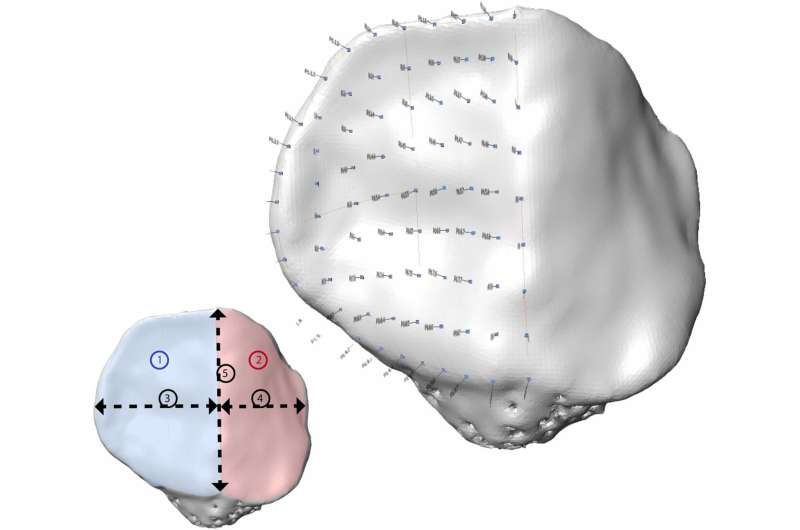This article has been reviewed according to Science X's editorial process and policies. Editors have highlighted the following attributes while ensuring the content's credibility:
fact-checked
trusted source
proofread
Link found between kneecap shape and debilitating joint disease

The shape of a person's kneecap could be an indicator of whether they're more at risk of developing osteoarthritis, according to a new study from The Australian National University (ANU) published in Osteoarthritis and Cartilage.
According to lead author of the study, Associate Professor Laura Wilson, women who develop knee osteoarthritis often experience more severe symptoms than men, but the reason for this is not well understood. Osteoarthritis, the most common form of arthritis, is a debilitating joint disease that causes pain, stiffness and swelling.
The research team set out to investigate whether kneecap shape might be a contributing factor.
"We wanted to focus on the kneecap as a major contributor of pain for individuals with knee osteoarthritis," Associate Professor Wilson said.
"We know that some features of the femur, which forms part of the knee joint, are shaped differently in women compared to men, and we hypothesized that we might, similarly, find sex differences in kneecap shape."
The team, which includes former ANU Master's student Jo Ménard, along with researchers at ANU and The Canberra Hospital, collected CT scans from a large sample of healthy individuals and patients on the wait list for knee replacement.
Using advanced image analysis techniques to create 3D models of hundreds of kneecap bones, the team then applied shape modeling methods to visualize and measure the shape of the surfaces of the kneecap in three dimensions.
While they didn't find unique features among the kneecaps of females compared to males, they did uncover variations in the surfaces of the kneecap that were more pronounced in individuals with osteoarthritis.
"What's surprising is that the different joint surfaces of the kneecap change shape in different ways with osteoarthritis, and as disease severity increases," Associate Professor Wilson said.
The team now plans to expand their study.
"We want to understand whether these shape differences in individuals with osteoarthritis start early on," Associate Professor Wilson said.
"If that's the case, then features of the kneecap might be added to disease prevention models, which could help identify people who are more at risk of knee osteoarthritis and could benefit from early intervention."
More information: Laura A.B. Wilson et al, Sex differences in patellar facet shape among healthy and osteoarthritic cohorts, Osteoarthritis and Cartilage (2024). DOI: 10.1016/j.joca.2024.06.018





















